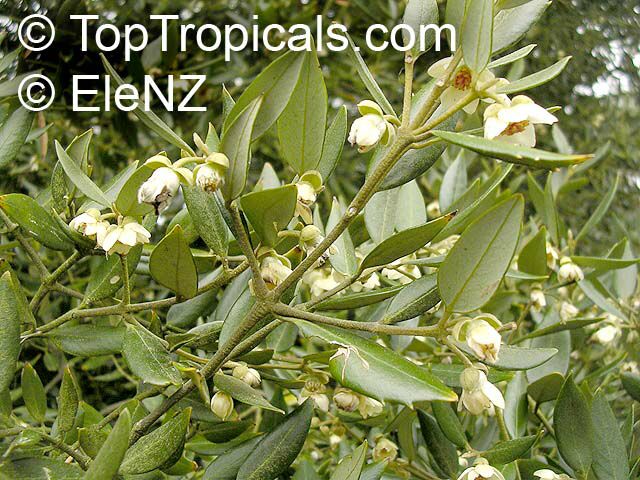Atherosperma moschatum (Black Sassafras)
Top Tropicals Plant Encyclopedia
Botanical name: Atherosperma moschatum
Common name: Black Sassafras
Family: Monimiaceae
Origin: Australia







Atherosperma moschatum is said to be a valuable ethnomedical plant. The species is found growing in wet coastal and mountain forests, from east Australia to New Zealand. It's grows to a height of 10-20 feet and is a hardy in USDA Zones 8-11. It has a dense crown of glossy, dark green leaves and elliptic to oblong in shape, finely toothed and aromatic when crushed.
The plant produces fragrant, white to pale off-white flowers arranged in umbels consisting of male and female flowers. These appear in late winter or early spring, followed by spherical, edible purple-black or blue-black fruit in summer.
It is essential to provide the plant with a moist, humus-rich soil and semi-shade to shade. This tree prefers full sun but can tolerate some semi-shade in hot climates. Regular watering is important and be sure not to let the soil dry out in between watering.
In cold regions, it can be grown in pots, as long as you make sure to provide the rootball with a good layer of insulation in colder seasons. Ensure your pot is a heavy material that will not be damaged when frosty and protect it. Give the plant a sheltered spot, making sure that it does not become exposed to winds.
Atherosperma moschatum has a range of toxins present in its bark and leaves, so it is considered to be a mildly poisonous or mildly toxic plant. All parts of the plant should be kept safely away from children and animals.



